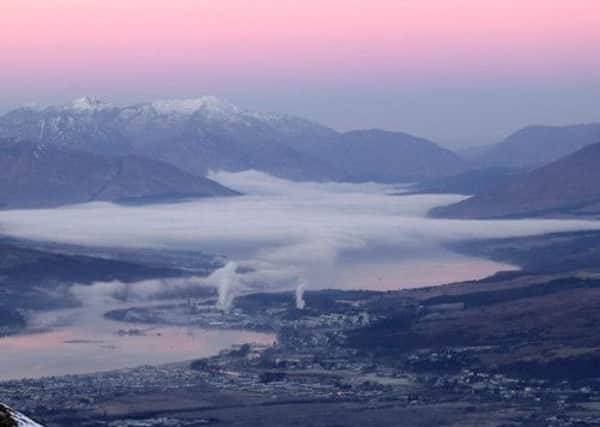Outward-looking learning approach goes a long way


Using the outdoors as the most perfect classroom makes absolute sense and can reap huge benefits.
The Trust operates in Wales, the Lake District and here in Scotland, where it has a residential centre in Loch Eil near Fort William, and an urban centre, Metro, serving the central belt. The Trust works in partnership with local authorities, schools and youth organisations offering unique outdoor learning to young people from a diverse range of backgrounds and needs … some with low confidence or poor social skills. The programmes are intentionally designed to fully support the delivery of the Curriculum for Excellence.
Advertisement
Hide AdAdvertisement
Hide AdThe Trust’s holistic approach to outdoor education ensures that the environment is central to the ethos of its personal development courses.
I believe it is imperative that we reconnect young people with the natural environment and that we use a gradual,
step-by-step learning model. First, participants are immersed in the natural world, establishing important sensory experience, where they gain knowledge through physical and social activities such as gorge scrambling, canoeing and overnight expeditions. These form a foundation from which skilled instructors can embed learning. Then, via debate and reflection, they explore their own personal values and behaviours, enabling them to recognise opportunities to apply this new learning in their everyday lives.
Encapsulating one of the key themes of The Year of Natural Scotland, Naturally Inspired Projects, The Trust’s Loch Eil centre ran a bespoke land-art based weekend course for Lomond School in Helensburgh, in May this year. Designed to bring together art and the Scottish natural environment, the course immersed pupils into the Scottish Highlands for activities, including collecting interesting objects such as the driftwood, slate and shells washed up on the beach to use as inspiration for their project. Instructors leading this bespoke course had an art background, in addition to their outdoor qualifications, and were therefore able to intelligently combine their knowledge of outdoor experiential learning with their skill and appreciation of art, to help pupils learn about themselves.
The Year of Natural Scotland is also being supported at the Loch Eil centre by using an environment pin board supporting the Big 5 initiative. Here, sightings of wildlife – namely basking sharks, pine martens, seals, otters and buzzards – during a course can be logged and recorded. This ‘environment learning journey’ is intrinsic to The Trust’s approach to learning through challenging adventures, where participants are totally immersed in the natural world, and where debate and reflection provide opportunities to carry back home the new ideas and practices developed.
In today’s competitive environment, young people need something ‘extra’ to help them stand out. In 2012-13 The Trust helped over 2,500 participants work towards achieving a John Muir Discovery or Explorer Award, which teaches young people to care and accept responsibility for the wonderful wild spaces and natural world around them.
To achieve the award participants fulfil four main challenges: They have to discover and explore wild spaces in the centre’s grounds or surrounding mountains, lochs and seas. Next, they must think of ways to conserve these beautiful wild spaces. And finally, share their experiences and what they have learned with their peers, family, friends and teachers.
My colleague, Sue Nicol, a senior instructor at Loch Eil, reported some great examples of what the young people got up to, including carrying discarded shopping baskets and litter away from Ben Nevis and working with local land owners to build bridges over streams. And a group from North Lanarkshire were recently taken to White Sands Beach in Smirisary near Arisaig. One young lad was moved to comment that “the reason this place is so beautiful is that there’s nobody here to ruin it”.
Advertisement
Hide AdAdvertisement
Hide AdThe boy’s immersion into this area of outstanding natural beauty helped him develop an awareness of the “potential negative impact humans can have on nature.”
The Outward Bound Trust is dedicated to unlocking the potential in young people through learning and adventure in the wild. With this comes a very real awareness of the connection between the environment and people, and their intrinsic importance to the health and wellbeing of this and future generations.
• Martin Davidson is Scottish director of The Outward Bound Trust, contact Martin at [email protected]
• To learn more about The Outward Bound Trust’s work, go to www.outwardbound.org.uk and for more information about the John Muir Award visit www.jmt.org